Royals and Singer turn the tables on the Dodgers in the finale
Brady Singer limits baseball's best offense to one hit. Vinnie Pasquantino and Salvador Perez team up to provide the runs. The Royals close out the homestead on a winning note.
The Dodgers’ offense is just relentless. Unyielding. Destructive and dangerous to the psyche of opposing pitchers.
It torched the Royals in the first two games of the series while the Dodger pitching (also of the highest quality) stymied the bats. The gulf in the quality between the two clubs was evident on Friday and Saturday. The Royals were outscored 21-6 in the two games.
Like any offense, though, the Dodgers have their vulnerabilities. Or maybe—and more likely—it sputters through an off day from time to time. I’d prefer to think, given his recent track record, that Brady Singer exposed and exploited the vulnerabilities of the Dodgers. However it was done, it was another clinic from the starter, who has continued to prove he’s a front-line major league starter. The Royals salvaged a victory from the three-game series against the juggernaut that is Dem Bums, winning 4-0, snapping LA’s 12-game winning streak. The Royals finished their longest homestand of the summer with a 7-4 record.
Singer held the Dodgers to just one hit on a steamy August Sunday (hotter than two rats in a wool sock…you know) at The K. He walked three (and hit a batter), which was out of character given his stellar 2.0 BB/9 entering the game, and yet another testament to the battles this Dodger lineup is capable of, even with the knocks aren’t falling. That Singer required 102 pitches to navigate six innings expands on that point. The Dodgers, even when they seem to go quietly, do not really do so. Every plate appearance is a grind, one through nine, with the line between “stupid and clever” as David St. Hubbins and his mates so succinctly put it, is of the extra fine variety.
There’s a ton to cover. Let’s get to it.
I’m running out of superlatives to describe Singer starts. Honestly, I did not think that was a sentence I would be writing in 2022. At least positive superlatives.
Singer, in holding the Dodgers to just one hit—a single to Chris Taylor in the fifth—recorded 19 swinging strikes, one better than his previous season-high. It works out to a 38 percent swing and miss rate on the sinker and a 50 percent swing and miss rate on the slider. Whew. Here’s where those pitches were located:
Again, I love charts like these because you can see exactly what works. Elevated sinkers and sliders low to the first base side of the dish. There are a few sinkers in the middle of the zone that look dangerous. But pitching is all about sequencing. Let’s look at a plate appearance against the always dangerous Mookie Betts in the third inning.
Singer opened with a slider that was elevated. It wasn’t the highest slider he threw on the afternoon, but you don’t see many Singer sliders there. It was taken for a called strike.
After jumping ahead, Singer then went low and away on his next two pitches. One was another slider. The next one was a sinker in almost the exact same location.
Ahead 2-1, it’s now a guessing game. Singer tried to get Betts to bite on two pitches low and away. Where’s the next one coming? High sinker that was down the chute. Whiff.
From there, Singer wiped him out with another low and away slider. Betts was completely flummoxed.
You can get away with a pitch down the middle if you’re not living there on the regular. The Betts at bat was an example of changing pitch types and eye level to gain the advantage.
You don’t always have to mix it up. Sometimes, you can just let it rip. Take the battle with Cody Bellinger earlier in the third. Singer threw four sinkers, all in the zone.
Bellinger wasn’t seeing the ball out of Singer’s hand or was just otherwise completely off balance against him, because he was swinging and missing all afternoon. In this sequence, Singer starts with a sinker down the chute that was looked at for a strike. He challenged Bellinger from there, slightly elevating with the next two sinkers. Bellinger missed the first and fouled off the second. Still behind 0-2 and having seen three straight sinkers, I’m thinking he’s looking on a slider boring down and in.
That is a hitter who has absolutely no clue what’s coming. And is surprised to see it’s 95 MPH in the middle. Just devastating from Singer.
Singer offered seven changeups to the Dodgers. How about this…three were put in play. Four outs were recorded. One was a double play off the bat of Gavin Lux.
The Dodgers featured six left-handed hitters in there starting lineup, providing ample opportunity for Singer to offer the cambio. Still, he threw only those seven. Although I was impressed that he broke off a 2-2 change to Trea Turner in the sixth. At 103 MPH, Turner hit it on the button—it was the hardest-hit ball off Singer all afternoon and his only “barrel” he allowed—but Michael A. Taylor was able to track it down in front of the wall in center.
Thanks to the bots at the Twitter account “Would it dong?” we can see that the Turner fly ball would’ve left nine parks. Singer, who has been a bit homer prone at times this year, dodged one there.
So, it would’ve been nice to see a few more changeups, but once again, the sinker/slider combo was on point. Still…there will be a start where he’s going to need that third pitch.
The offensive star of the game was Vinnie Pasquantino. He homered (424 feet, the longest of his young big league career), doubled and singled to drive in two of the Royals’ four runs. His double in the sixth would’ve been a home run in 27 of the 30 major league yards.
The dude is locked in, hitting in six consecutive games. He hit .424/.459/.848 (14-for-33) two doubles and four home runs on the homestand. He also drove in seven and scored seven times.
The Royals’ post-game notes made mention of Pasquantino being a triple short of the cycle. I imagine we will be getting a few of those notes over the next several years.
Anyway, just a brief note on Vincenzo today. I’ll have more on his start soon.
Shall we attempt to read between the lines?

A little backstory is in order. The Royals initial lineup Sunday had Melendez leading off and playing left. About an hour prior to first pitch, they announced a change where Melendez was scratched and Taylor was elevated to leadoff. Kyle Isbel, originally slated to play right was shifted to left and Nate Eaton was added.
Melendez pinch hit for Brent Rooker in the eighth and grounded out.
Given that Melendez appeared later in the game makes one think his removal from the lineup wasn’t injury related. And Matheny’s comment about opportunity smells like a manager who is ticked off at a player for a reason. Perhaps Melendez overslept on Sunday and reported late to the yard. Perhaps there was another reason. At any rate, this feels like discipline. I will assume, since Melendez pinch hit late in the game, that this was a one-time thing and the Royals are keeping it in the clubhouse.
As for Saturday…When a Royals starter has an outing that conjures memories of Kyle Davies or Vin Mazzaro…that’s not a good thing. Not at all.
Actually, Brad Keller’s start on Saturday was more Glenn Sparkman-esque than in the realm of Davies or Mazzaro, although I’m not certain that’s going to make anyone feel better.
Keller was rocked by the best lineup in baseball, recording just nine outs while surrendering three home runs and allowing eight runs total. He struck out three and walked three. It’s a line very similar to one Sparkman recorded in a start against the Blue Jays in 2019. It was the 18th time in franchise history a starter went three or fewer innings, allowing eight or more runs, while surrendering three dingers.
Keller’s Game Score of nine (yes, nine) somehow wasn’t even the worst Game Score of the week. That honor belongs to Miles Mikolas who was bludgeoned by the Rockies. Still, Keller’s outing was one of 25 this season that has earned a Game Score of 10 or less.
Mike Matheny pinpointed Keller’s fastball as a culprit in the miserable outing. He was throwing it almost two MPH faster than his seasonal average, but with the extra velocity, he had less movement on the pitch. Keller doesn’t normally get much horizontal movement on the four-seam, but does get a bit of drop to the pitch. It was coming in much straighter on Saturday. The Dodgers aren’t going to miss straight fastballs at 96 MPH.
Keller was really all over the place with the heater. And when he was in the zone, it was…well, the best way to convey this unfortunate information is with a heat map from Baseball Savant.
Home run
Single
Walk
Walk
Single
Single
Single
That was Keller’s first inning before he recorded an out.
The dinger was the belt-high fastball that right-handed hitting Mookie Betts got full extension on a 2-2 count. Rarely is a game over after the first batter. Keller made it so.
Keller was the anti-Singer. Living in the middle and getting pounded. Singer was successful because he was spotting on the edges and was rarely missing by a large margin. Keller wasn’t successful because he wasn’t close to the edges. When he missed, he missed. And when he came in straight and in the zone, the Dodgers were able to react.
While the Dodgers are the most productive offense in baseball, I imagine Keller would’ve struggled to get through three against just about any other team. Maybe not the White Sox, but you know what I mean.
On Sunday, I learned that Doug Kern, a former researcher at ESPN and all-around baseball trivia guru and stat head, passed away a few days ago. He was 48.
Doug would put out statistical Twitter recaps of each game, every night. I wondered how he could keep himself awake and engaged as the West Coast games wrapped up. His nuggets—or Kernels as he called them—were always fun.
He recapped the Royals for the last time after their Sunday win against the Red Sox:

Doug was also the first to come up with this Kernel the day before, which I quoted in the newsletter.


Doug was one of those guys who, while I never really interacted with him on Twitter, made the platform better. His stats and trivia were fun, often unlocking a memory of a past player or event. I mean, odds were you weren’t thinking of Paul Schaal when Nick Pratto clubbed his walk-off dinger. Doug worked that kind of magic. Baseball Twitter lost a good one last week.
When we revisit this season, the demarcation moment will be the trade deadline. Although they had been getting a ton of playing time since the All-Star break, the trade of Whit Merrifield to Toronto, while delightful on the surface, was the moment when this team was handed over to the kids.
That was on August 2nd. The Royals lost that night to the White Sox and they also lost the next day. Overall though, they’ve been doing alright since the trade deadline and the removal of one of their alleged leaders.
They’re a game over .500 since August 2, with a run differential that puts them right around that break-even mark. Normally when the Royals are out of it in April (like they were this year), they kick on the afterburners in September, lulling the front office into a strong sense of false hope. This year thought, the surge seems to have started a month early.
With around seven weeks to go, I’m not about to stick my neck out and make a prediction about how this team will finish. There’s too much variance in the rookie bats to say anything for certain. One thing I do know is that they come to play every night. It’s fun baseball. If you drifted away May and June, I hope they grabbed your attention over the last couple of weeks. It’s going to be interesting to see how this team approaches the finish line.
The Royals head north this week, to see how they stack up against the Twins of Minnesota. Minnesota spent the week in the Los Angeles area, losing both games to the Dodgers and then dropping two of three to the Angels. As you can see from the standings above, they’re scuffling. Apart from one random day in June, they’ve been in first place in the Central since April 24. Well, at least until this week. I told you the Dodgers are a destructive force. I guess the Angels are, too. At least when it comes to the Twins.
Mon - LHP Kris Bubic (2-6, 5.02) vs. RHP Joe Ryan (8-5, 3.95) @ 6:40
Tue - RHP Zack Greinke (4-7, 4.29) vs. RHP Sonny Gray (6-3, 3.33) @ 6:40
Wed - LHP Daniel Lynch (4-7, 4.52) vs. RHP Tyler Mahle (6-7, 4.26) @ 12:10





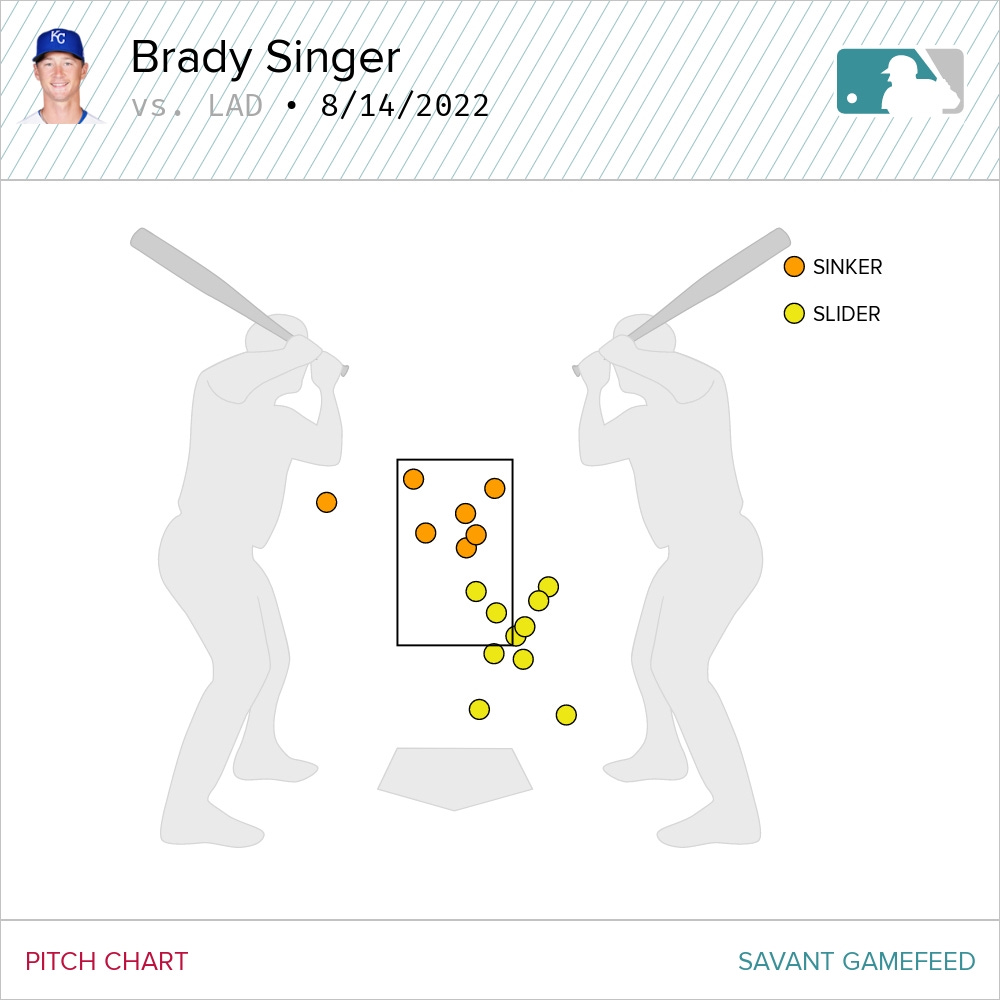
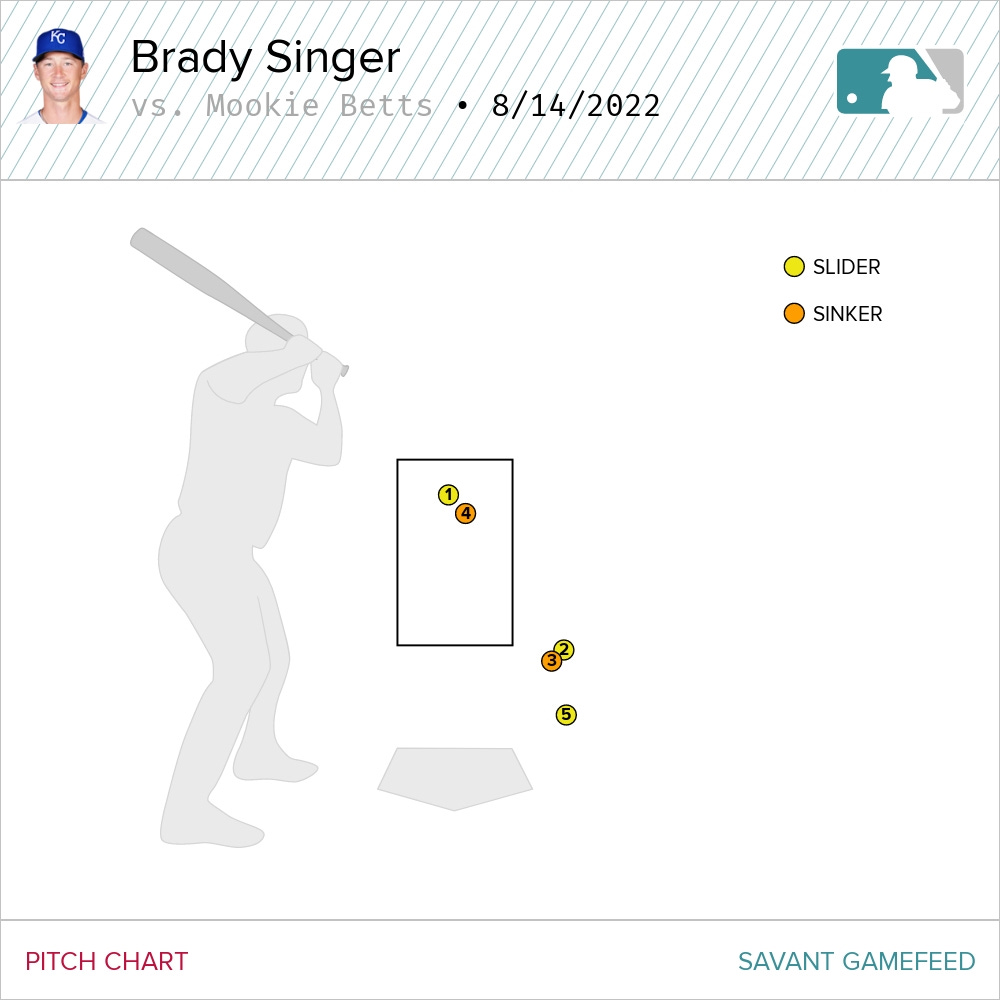
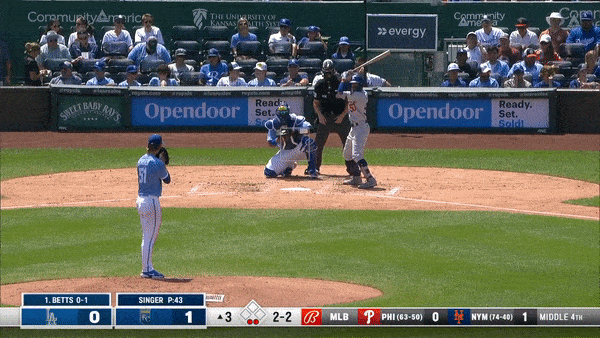
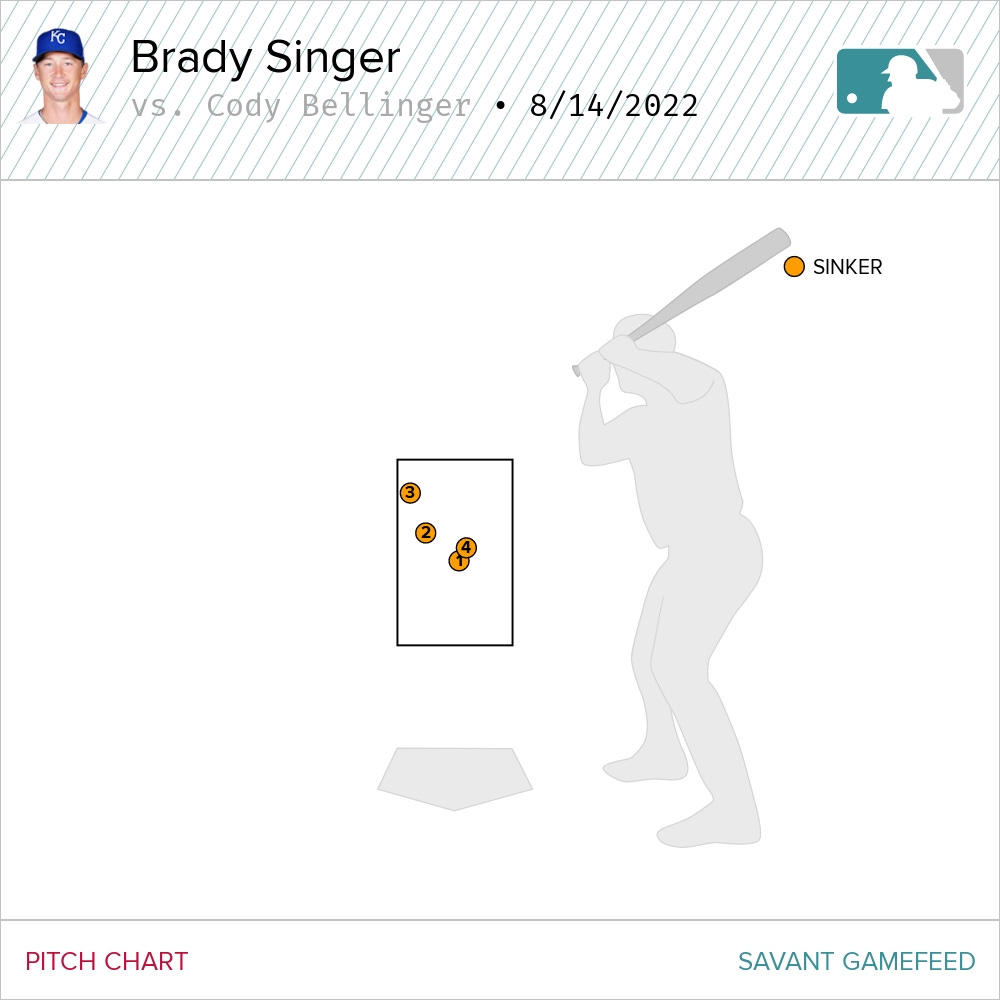






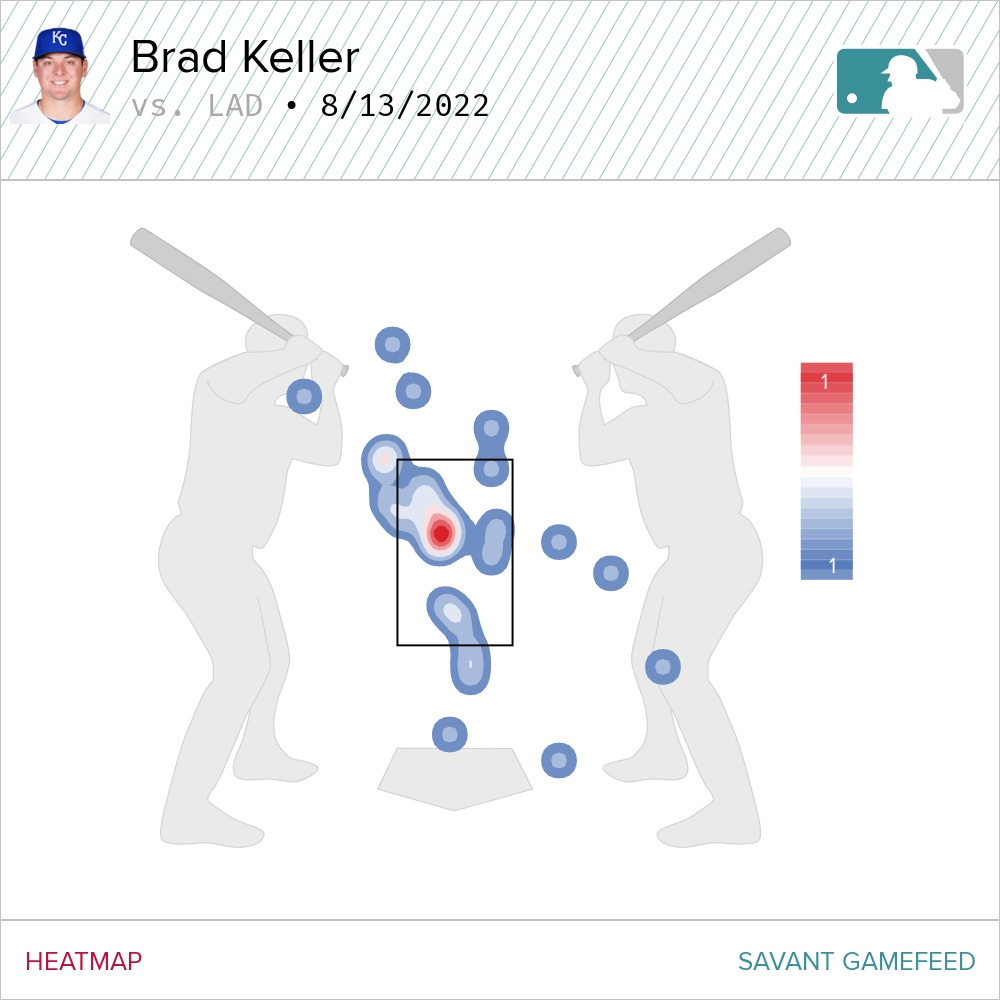
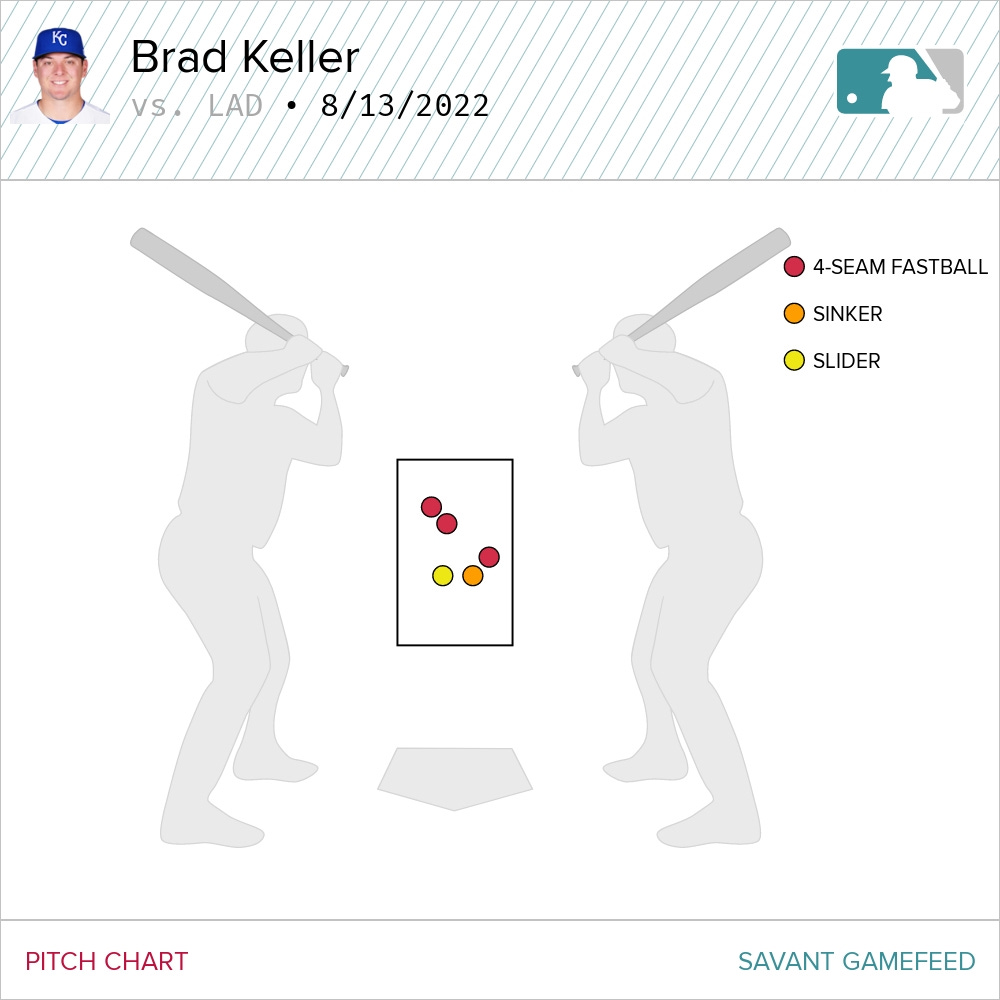
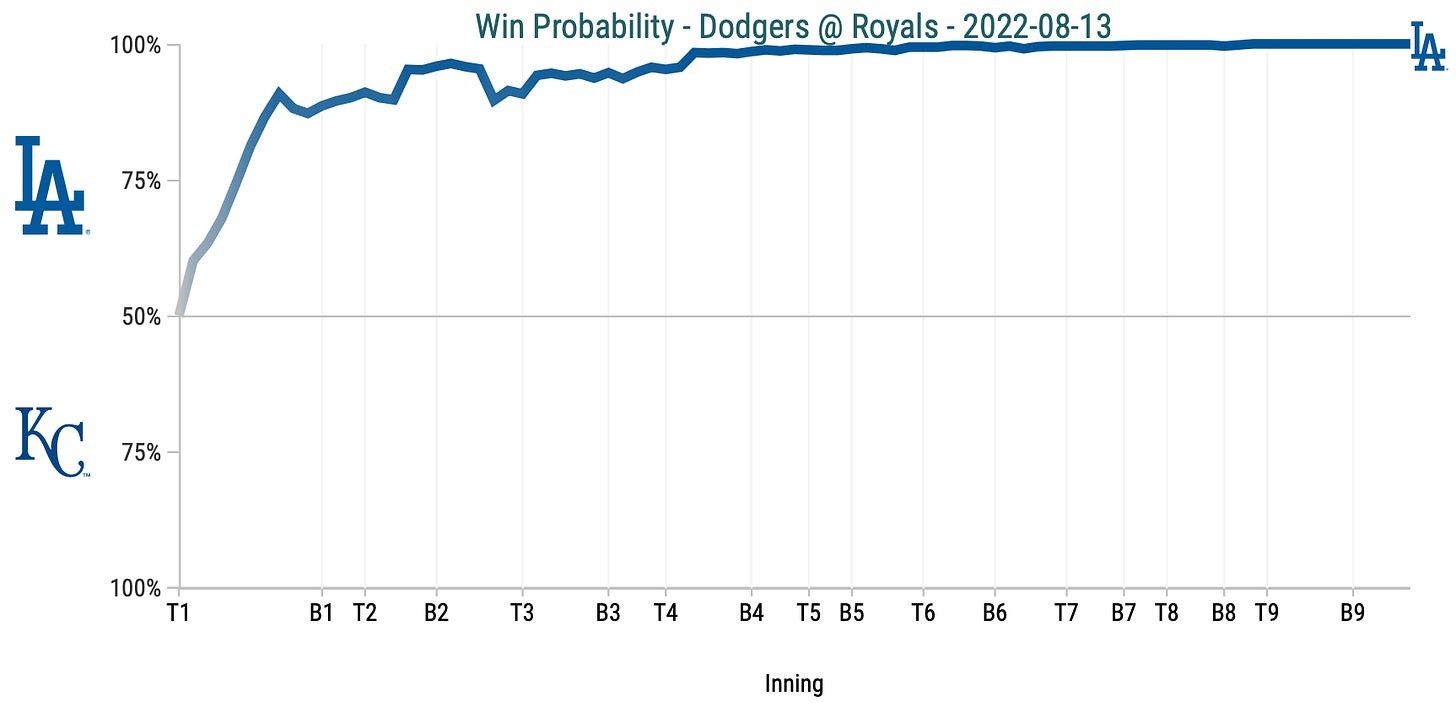


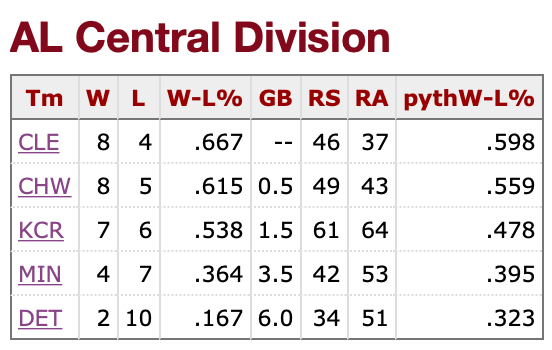

I continue to see a lot of 2007-2008 Zack Greinke in Singer's style and results right now. That slider sweeping down and in on lefties paired with a 95 mph fastball he can locate. Zack did say he appreciated what Gil Meche did for his career and that he'd like to pay it forward to others. I think we might be seeing that happen right before our eyes.
Those first and fourth pitches that Singer threw to Bellinger were in....let's call it... "suboptimal locations."
While I'm glad his stuff was good enough that he got away with it, I'm really hoping he doesn't make a habit of that. Nobody pitching against MLB hitters can survive that way for long.
But that's a little nitpicky. His dominance over the Dodgers reminded me of Danny Duffy's 18-strikeout game. The Dodgers looked completely overmatched, and I'm quite confident that hasn't happened much this year.